Selecting the Appropriate SPME Fiber Coating –Effect of Analyte Molecular Weight and Polarity
Previously in the Reporter (Vol. 23) we discussed how to select the appropriate fiber assembly, focusing on fiber core, needle gauge and assembly design. This article focuses on how to select the appropriate fiber coating based upon analyte size and polarity. There are 4 major criteria that are commonly used in selecting the proper fiber coating. These are molecular weight/size of an analyte, the polarity, the analyte concentration level, and the complexity of the sample matrix. This article will focus on the molecular weight or size and polarity of the analyte in relation to fiber coatings. A future article will focus more on the relationship between analyte concentration and fiber capacity.
The molecular weight of an analyte determines how rapidly it can move in and out of the fiber phase coating and through the sample. A smaller analyte will move faster and is not as well retained; whereas, the larger analytes migrate through the coating and sample more slowly and take a much longer time to reach equilibrium. The coating thickness plays a major role in determining the equilibrium time and the desorption efficiency of the analyte from the fiber coating (Figure 1).
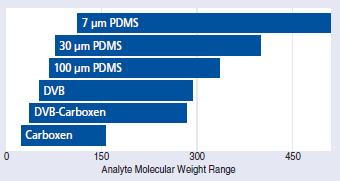
Figure 1.Molecular Weight Extraction Range for SPME Fiber Coatings
The size and shape of a molecule is also important. A flat planar structure with no substitution groups can interact with the phase coating or adsorbent usually through π-π interactions. Examples of these types of analytes are PAHs, and long chained molecules with multiple double bonds that make them more rigid. Because of increased interactions, these analytes effectively act like analytes with molecular weights 30-50 atomic mass units (AMU) higher. Conversely, if the analyte is highly branched, or is aromatic with substitution groups, such as chlorine, or bromine, this reduces the interaction with adsorbents, and their effective size is actually smaller if the substitution group has high electronegativity. Since the size of the molecule is smaller than an all hydrocarbon structure of the same MW, it has the extraction efficiency similar to a molecule that is approximately 30 amu less in molecular weight. This number will vary depending upon the degree of substitution and is just a rough guideline.
Generally for smaller analytes with a MW less than 150, an adsorbent fiber coating that can retain these fast moving analytes is recommended. Carboxen fibers are recommended for these analytes especially at trace concentration levels. Other fiber coatings containing DVB and those with thicker phase coatings may be suitable especially if the analytes are in higher concentration levels or the samples contain multiple analytes (Figure 2). In this figure the area counts are labeled above the peaks. The Carboxen-PDMS fiber coating on average extracted 200 times more of these analytes than the 100 μm PDMS fiber.
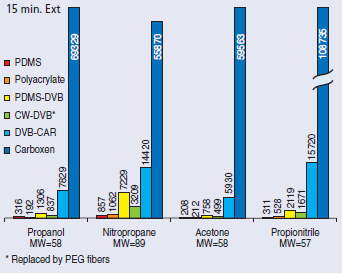
Figure 2.Fiber Coating Comparison - Response of Low Molecular Weight Analytes
For larger analytes, absorbent fibers (those without adsorbents) may be the better option, but divinylbenzene (DVB) containing fibers with larger pores are suitable for many of these analytes too. Figure 3 shows the extraction efficiency of some larger analytes too. The area responses for the fiber coatings yielding the highest and lowest responses have been noted with the actual area counts. The fiber least effective for the extraction of chrysene is Carboxen-PDMS. This 4-ringed PAH has strong interaction with the carbon surface and is not efficiently desorbed. The response is so low that it does not show on the graph. Even though decachlorobiphenyl has a higher molecular weight than chrysene, it is desorbed more efficiently by the Carboxen- PDMS fiber because the chlorine molecules reduce the π-π interactions between Carboxen and DCBP.
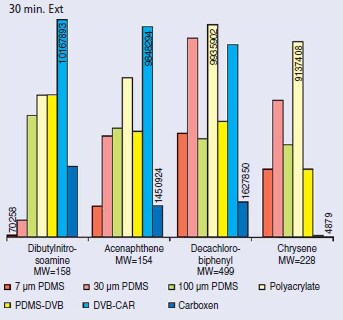
Figure 3.Comparison of Fiber Coatings – Response of Semi-volatile Compounds
Most of the other fibers extract these large non-polar analytes fairly well. The extraction time plays a major role. The extraction time for the analytes shown in Figure 2 was 30 min. The larger analytes are more efficiently analyzed by the 30 μm PDMS fiber than the 100 μm, PDMS fiber. It takes much longer for large analytes to reach equilibration in thicker fiber coatings. Also, desorption is less efficient from thicker coatings. In general the absorbent fiber coatings, those not containing DVB or Carboxen, are the better choice for these larger analytes.
Dibutylnitrosoamine is the only analyte in this graph that has mixed polarity. It has 2 bulky non-polar butyl groups, but it contains a polar nitrosamine grouping. Because of the increased polarity, the non-polar PDMS fibers were not efficient for extracting these analytes. The polyacrylate fiber and the adsorbent containing fibers were better choices for these more polar analytes. Another alternative is the newly developed PEG fiber.
The DVB-Carboxen fiber was designed to extract a wider molecular weight range. This fiber coating consists of a layer of DVB suspended in PDMS coated over a layer of Carboxen-PDMS. The concept is that the larger analytes will be retained by DVB whereas, the smaller analytes will migrate into the Carboxen adsorbent. This effectively increases the molecular weight range that the fiber can extract. As shown in Figures 2 and 3, this fiber was a good compromise over a very wide molecular weight range. The only limitation is that this fiber will have less sample capacity due to the thinner coatings of each layer.
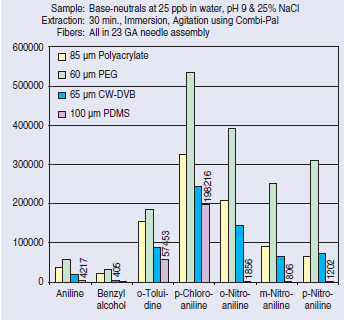
Figure 4.Comparison of SPME Fiber Coatings – Extraction of Base-Neutrals, Polar Fraction
The second criteria to look for is the polarity of the analyte. For volatile, low molecular weight compounds, Carboxen-PDMS coated fibers are still the best choice. Once the molecular weight increases above 80 amu, the effect of fiber polarity becomes more evident for the extraction of polar analytes.
There are only 2 polar fiber coatings, however, there are some cases where other fibers will extract polar analytes too, but with lower efficiency. The 2 polar fibers are the 60 μm polyethylene glycol (PEG) phase and the 85 μm polyacrylate (PA) phase. Ideally you want polar fibers to be more selective, not only to extract polar analytes but also to repel non-polar analytes. Figures 4 and 5 show the comparison of 4 different SPME coatings for the extraction of base-neutral analytes. Figure 4 shows the polar fraction of the analytes. In all cases the 60 μm PEG fiber was the best choice for these analytes. The PA fiber coating, slightly less polar than the PEG coating, is also suitable for the extraction of these analytes. The 100 μm PDMS fiber poorly extracted these polar analytes. Because counts were so low, in some cases the area response did not show on the graph, so the area counts are listed above the bar.
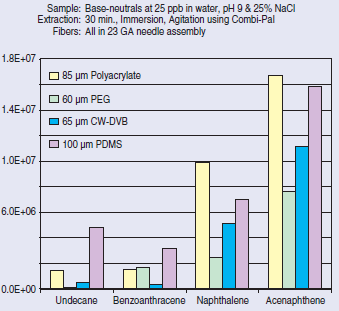
Figure 5.Comparison of SPME Fiber Coatings – Extraction of Base-Neutrals, Neutral Fraction
Figure 5 shows that in the neutral fraction, the analytes are extracted efficiently by all of the fibers as indicated by the higher area counts. Interestingly, the PA fiber, that likes aromatic compounds, was the best fiber for some of the neutral compounds. The PEG fiber as expected, being the most polar, extracted these analytes less efficiently than the other fibers. This indicates that the fiber does selectively extract polar analytes compared to the other SPME fibers.
如要继续阅读,请登录或创建帐户。
暂无帐户?